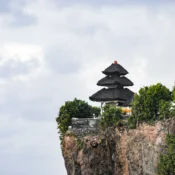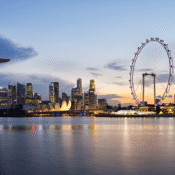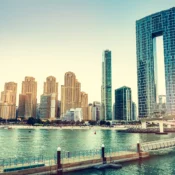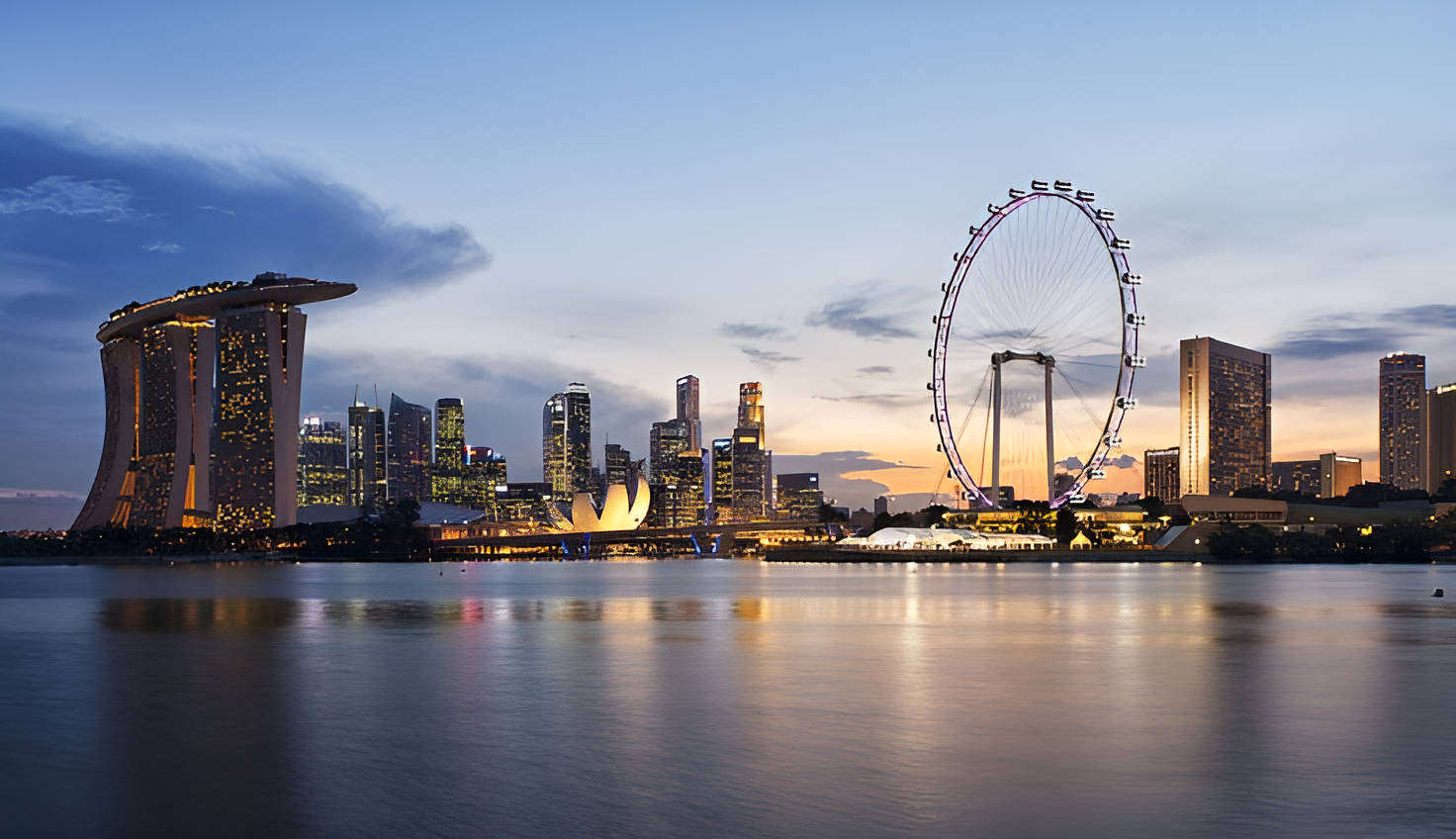
Singapore Sensation – 7 Days of Wonder in the Lion City
Singapore defies conventional expectations. This tiny island city-state—often compared to Switzerland for its efficiency—packs astonishing diversity into just 730 square kilometers. For Indian travelers seeking their first Asian adventure beyond India, Singapore offers the perfect entry point: English-speaking infrastructure, world-class safety, remarkable food culture reflecting its multicultural heritage, and cost-effective experiences that belie its reputation for luxury.
The Lion City (derived from Singapura, meaning “lion city”) has transformed from a colonial trading port into a gleaming metropolis of futuristic architecture, cutting-edge technology, and preserved heritage sites standing defiantly alongside skyscrapers. What makes Singapore extraordinary isn’t single showstopping landmarks but the seamless integration of gardens, culture, food, and modernity creating constant discovery around every corner.Singapore remains one of Asia’s most expensive destinations, yet budget-savvy travelers can explore for less than INR 50,000 for a week if they embrace local experiences, eat at hawker centers, and use public transport. This comprehensive guide reveals how to maximize experiences while minimizing costs.
Understanding Singapore’s Geography: Neighborhoods and Getting Around
Singapore’s small size means all major attractions sit within reach via the efficient MRT (Mass Rapid Transit) system, making neighborhood navigation straightforward.
Marina Bay – Modern Icon Central
Marina Bay represents Singapore’s gleaming future, anchoring major attractions including Marina Bay Sands, Gardens by the Bay, and ArtScience Museum. The Marina Bay Sands infinity pool (accessible only to hotel guests or day-pass holders paying approximately INR 8,000-10,000) remains iconic, though equally impressive free experiences surround the bay.

The Supertree Grove within Gardens by the Bay features twelve colossal tree-like structures reaching 50 meters (164 feet), housing over 160,000 plants each. Daytime exploration is free; nighttime “Garden Rhapsody” light shows synchronized to music occur nightly at 7:45 PM and 8:45 PM—completely free to watch from below. This combination of futuristic design and botanical engineering creates Instagram-perfect moments without entry fees.
The Esplanade, nicknamed “the durian” for its distinctive spiky exterior made of 7,000 aluminum sunshades, hosts free live performances by international and local artists. Sitting near the Esplanade Waterfront Promenade watching performers and enjoying city skyline views costs nothing yet rivals paid entertainment venues for atmosphere and engagement.
The Merlion statue—Singapore’s national icon combining a lion’s head and fish body representing the city’s roots as a fishing village and the name Singapura—stands at iconic status despite being relatively underwhelming in person. The photo opportunity proves worthwhile, but expect crowds and arrive early morning for better shots.
Marina Bay comes alive in evenings when the skyline lights up. The free Spectra light and water show at Marina Bay Sands occurs daily at 8 PM and 9 PM (10 PM added Friday-Saturday), featuring synchronized lights, water jets, and music creating spectacle rivaling ticketed performances.
Sentosa Island – Entertainment Hub
Sentosa Island, just off Singapore’s southern coast, concentrates major attractions including Universal Studios Singapore, S.E.A. Aquarium, Adventure Cove Waterpark, and Adventure Park. Access via cable car (approximately INR 1,500 round-trip), Sentosa Express monorail (INR 500), or bridge on foot (free).

Universal Studios Singapore features themed zones including Minion Land (new in 2025), offering rides and entertainment catering to diverse age groups. Day tickets cost approximately INR 7,000-9,000 depending on booking method; online advance purchases offer discounts versus gate prices.
S.E.A. Aquarium, one of the world’s largest, houses over 65,000 marine animals in massive tanks. Entry costs approximately INR 3,400, providing hours of underwater wonders and educational experiences, particularly rewarding for families with marine-life-interested children.
Beaches on Sentosa (Siloso, Tanjong, and Palawan) offer tropical swimming in designated zones with lifeguards and facilities. Beach entry is free; facilities like beach umbrellas and loungers require rental fees.
Chinatown and Little India – Cultural Immersion
Beyond futuristic attractions, Singapore’s neighborhoods preserve cultural heritage defining the city’s multicultural identity. Chinatown features historic shophouses with colorful facades housing restaurants, shops, and temples. The Sri Mariamman Temple, Southeast Asia’s oldest Hindu temple, welcomes visitors respectfully removing shoes.
Hawker centers—outdoor food courts where multiple stalls serve regional dishes—concentrate in Chinatown (Maxwell Food Centre and Lau Pa Sat). Meals cost SGD 4-10 (INR 200-500), making them budget dining options serving authentic, high-quality food impossible to find in tourist restaurants at those prices.
Little India bursts with color, aroma, and energy, featuring temples, spice shops, textile stores, and restaurants serving Indian cuisine. Walk Serangoon Road, visit Thian Hock Keng Temple in nearby areas, and absorb the atmosphere. Entry to temples is free; donations appreciated.
Kampong Glam – Malay Heritage

Kampong Glam represents Singapore’s Malay-Muslim heritage, centered around the beautiful Sultan Mosque. The surrounding streets feature boutique shops, art galleries, and restaurants serving exceptional Malay, Middle Eastern, and fusion cuisine.
The area comes alive on weekend evenings when younger crowds fill cafes and bars. During Ramadan, the area transforms with evening markets and special food celebrations.
Orchard Road – Shopping and Dining
Orchard Road stretches 2.2 kilometers lined with luxury boutiques, mid-range shopping malls, and restaurants. Luxury shopping suits high-budget travelers; mid-range options appeal to broader audiences. Multiple malls offer browsing options from budget-friendly to high-end.
Cafes and restaurants dot the street, from hawker-style stalls to Michelin-starred establishments. Window shopping costs nothing; purchasing requires budgeting.
Must-Visit Attractions: Creating Your Singapore Itinerary
Singapore’s attractions span cultural, natural, technological, and entertainment categories, allowing flexible itinerary building.
Gardens by the Bay and Supertree Grove
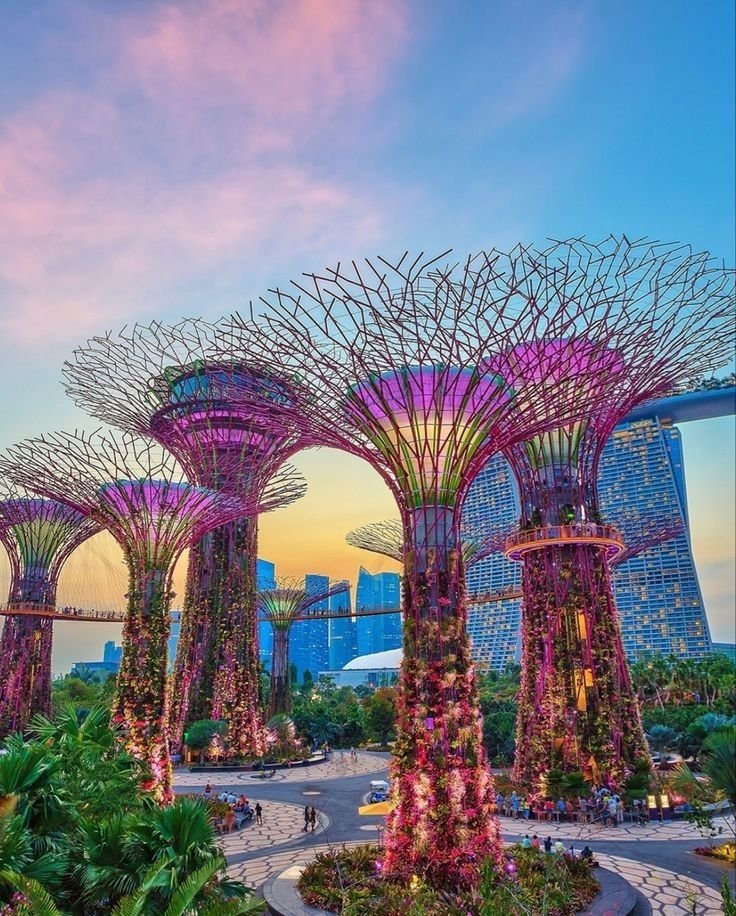
Beyond the famous nighttime show, Gardens by the Bay comprises multiple paid exhibits worth considering. The Cloud Forest features a 35-meter indoor waterfall surrounded by exotic plants from tropical highlands. Entry costs approximately INR 1,650 for just the Cloud Forest; combined tickets for Cloud Forest and Flower Dome (another conservatory) cost approximately INR 2,500.
These conservatories offer cool refuge during hot, humid afternoons while providing botanical education and photo opportunities. Many consider them underrated compared to the free Supertree Grove.
Singapore Botanic Gardens

Established in 1859, these 74-hectare gardens feature beautiful landscapes, themed zones, and peaceful walking paths. Entrance is free; it’s one of Asia’s best no-cost attractions. Mornings offer the best experience with fewer crowds and cooler temperatures. The National Orchid Garden within the Botanic Gardens charges separate entry (approximately INR 1,400) but contains over 1,000 orchid species justifying the cost for plant enthusiasts.
Universal Studios Singapore
For theme park enthusiasts, USS offers diverse attractions including roller coasters, dark rides, and themed zones. The new Minion Land (opened 2025) features Despicable Me-themed attractions, rides, and food. Ticket costs approximately INR 7,000-9,000 depending on date and booking method. Annual pass holders recommend visiting during off-peak seasons rather than peak tourism periods.

A full day allows experiencing 8-12 major attractions assuming quick movement between rides. Arrive at opening to maximize time; consider renting lockers (INR 600-1,200 daily) for belongings as carrying items between rides proves tedious.
Singapore Zoo and Night Safari
Occupying 26 hectares, Singapore Zoo houses over 2,800 animals in habitat-based exhibits. Animals roam relatively freely in spacious enclosures creating more natural viewing experiences than cramped cages. Entry costs approximately INR 3,100-3,500.
The Night Safari operates separately in the same location, featuring animals’ nocturnal behaviors. Visiting after dark via tram and walking paths provides unusual wildlife encounters. Night Safari entry costs approximately INR 4,200-4,900. Combined day and night visits create marathon experiences; most visitors choose one.
Singapore Flyer – Observation Wheel
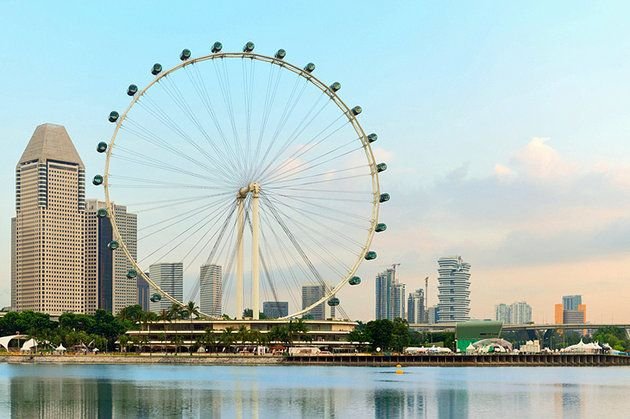
Standing 165 meters tall, the Singapore Flyer offers 360-degree city views via a 30-minute rotation. Entry costs approximately INR 2,000-2,800 depending on ticket class. Visit during late afternoon to experience daytime city views, sunset transformation, and early nighttime lighting in a single ride.
SEA Aquarium
This massive underground aquarium features 65,000 marine animals representing over 800 species. The main tank holds 40 million liters of water with an acrylic panel allowing underwater views from Adventure Cove Waterpark above. Entry costs approximately INR 3,400; consider combining with waterpark passes for better rates.
Shopping and Night Experiences
Orchard Road shopping districts suit diverse budgets from street shopping to luxury boutiques. The Great Singapore Sale (June-August) offers 30-50% discounts on retail items, attracting shopping enthusiasts globally.
Chinatown Night Market (Friday-Sunday) features vendor stalls selling goods, food, and souvenirs; evening wandering creates authentic local experiences impossible to replicate during daytime. Clarke Quay transforms into nightlife hubs with riverside bars, clubs, and restaurants creating Singapore’s most energetic evening scenes.
Culinary Journey: Tasting Singapore
Singapore’s food culture epitomizes its multicultural identity, featuring Chinese, Malay, Indian, and international cuisines coexisting harmoniously.
Hawker Culture – Budget Gourmet Paradise
Hawker centers are Singapore’s soul—outdoor food courts where multiple stall operators specialize in specific dishes. Maxwell Food Centre near Chinatown offers options like chicken rice (INR 200-250), laksa noodles (INR 250-350), and desserts. Lau Pa Sat in the central business district features similar diversity in heritage surroundings. Meals cost SGD 4-10 (INR 200-500) for high-quality food superior to many restaurants at double the price. Hawker dining represents authentic Singapore eating culture unchanged despite the city’s modernization.
Must-Try Dishes
Chicken Rice: Fragrant rice cooked in chicken stock, topped with tender poached chicken, chili paste, and dark soy sauce. Iconic, simple, and perfected through generations.
Laksa: Creamy coconut curry noodle soup representing Peranakan (Singaporean-Chinese blend) cuisine. Intensely flavorful, complex, and warming despite the tropical heat.
Char Kway Teow: Stir-fried flat noodles with Chinese sausage, shrimp, cockles, and dark soy sauce, creating caramelized richness.
Satay: Grilled meat skewers with peanut sauce representing Malay cuisine.
Teh Tarik: Pulled tea drink made by streaming hot tea between two cups creating foam and mixing condensed milk. A cultural experience as much as a beverage. Fish Head Curry: A Singaporean specialty combining Indian curry tradition with local fish, creating intensely flavored, communal eating experiences.
Restaurant Dining
Beyond hawkers, Singapore hosts multiple Michelin-starred restaurants, upscale dining establishing it as a gastronomic destination. Restaurants like Odette, Labyrinth, and Candlenut offer fine dining experiences; expect INR 3,000-8,000 per person for tasting menus.
Mid-range restaurants offer comfortable dining with quality food for INR 1,000-2,500 per person, excellent value compared to equivalent Western dining.
When to Visit Singapore: Seasonal Considerations
Singapore’s equatorial location means consistent warmth year-round—temperatures remain 26-32°C with high humidity constantly.
Peak Season (December-February) – Cooler and Drier
December through February represents Singapore’s “cool and dry” season (relatively speaking—it’s still warm and humid by temperate standards). This period coincides with European winter holidays, driving tourist numbers and hotel rates upward.
December features Christmas celebrations and New Year festivities; January brings Chinese New Year festivities depending on lunar calendar. If experiencing festival periods matters, book these months; prepare for crowds and premium pricing.
Accommodation costs INR 6,000-12,000 per night for mid-range hotels; budget options remain INR 3,000-5,000.
Shoulder Season (March-May, September-November) – Value and Fewer Crowds
March through May and September through November see fewer tourists, lower hotel rates, and maintained weather conditions. March remains pleasant; May sees temperature rise approaching summer levels.
September and October mark transition months from monsoons; while rainfall decreases, humidity remains high. These months offer 20-30% discounts compared to peak season for accommodations and flights.
Monsoon Season (June-August) – Adventurous Travelers and Budget Hunters
The Southwest Monsoon (June-August) brings more frequent rainfall and higher humidity; however, rains often come in brief afternoon showers rather than all-day downpours. Many activities continue despite occasional rain.
Hotel rates plummet during this season—mid-range accommodation available for INR 3,500-6,000 per night, representing significant savings. Attractions see minimal crowds; shopping malls remain pleasantly uncrowded.
The Great Singapore Sale (June-August) attracts bargain hunters willing to navigate crowds for significant retail discounts.
This season suits budget travelers, those avoiding crowds, and adventurers comfortable with occasional rain.
Practical Information for Indian Travelers
Visa Requirements
Indian passport holders can obtain 30-day tourist visas on arrival at Singapore’s Changi Airport or apply online for e-visas via Singapore’s immigration website. Visa-free entry applies for certain nationalities; Indian citizens require visas.
Ensure passport validity of 6+ months and blank visa pages. Visa processing takes 1-3 days for e-visa applications.
Currency and Costs
Singapore Dollar (SGD) is the currency—approximately 1 SGD = INR 60-65 depending on exchange rates.
Daily budget breakdown (per person):
- Budget travelers: SGD 50-80 (INR 3,000-5,000) — hostels, hawker food, free attractions, public transport
- Mid-range travelers: SGD 150-250 (INR 9,000-15,000) — mid-range hotels, mixed dining, paid attractions
- Luxury travelers: SGD 400+ (INR 24,000+) — premium hotels, fine dining, private experiences
Transportation
MRT (Mass Rapid Transit) provides efficient, air-conditioned rapid rail connecting all major attractions. Purchase prepaid cards at stations and add credit; fares range SGD 0.90-3.20 (INR 55-195) depending on distance. Day travel cards offer unlimited journeys for SGD 13-16 (INR 800-1,000).
Buses cost SGD 0.65-3.20 (INR 40-195) depending on distance and offer expansive network coverage.
Taxis and Ride-hailing (Grab/Gojek) cost SGD 5-20 (INR 300-1,200) for typical journeys. App-based services offer transparent pricing.
Walking works well for exploring compact neighborhoods; downtown Singapore remains walkable despite heat and humidity.
Most visitors combine MRT for long distances with walking for neighborhood exploration.
Health, Safety, and Cultural Etiquette
Singapore ranks among the world’s safest cities with virtually no crime against tourists. Standard precautions (securing valuables, avoiding isolated areas after dark) apply but threats remain minimal.
Sun and humidity: Apply high-SPF sunscreen regularly, wear hats/sunglasses, and drink abundant water. Humidity peaks April-May; afternoons prove most uncomfortable.
Cultural sensitivity:
- Dress modestly in temples and conservative areas; beach wear remains casual
- Remove shoes before entering temples
- Use right hands for eating and giving/receiving items
- Photography in temples requires permission
- Respect local customs around alcohol consumption
- Singapore strictly enforces laws; penalties for drug possession, overstaying visas, or littering are severe
Sample Itineraries
4-Day Essential Singapore
- Day 1: Marina Bay (Merlion, Gardens by the Bay nighttime show, Esplanade, Marina Bay light show)
- Day 2: Sentosa Island (Universal Studios or Aquarium or beaches)
- Day 3: Chinatown/Little India cultural immersion, hawker dining, temple visits
- Day 4: Singapore Flyer, Orchard Road shopping, Night Safari or Singapore Zoo
7-Day Comprehensive Singapore
- Days 1-2: Marina Bay attractions (Gardens, Supertrees, Marina Bay Sands views, light show)
- Days 3-4: Sentosa Island (USS day 3, aquarium/beaches day 4)
- Day 5: Chinatown, Little India, Kampong Glam cultural exploration
- Day 6: Singapore Zoo/Night Safari, Orchard Road shopping
- Day 7: Singapore Botanic Gardens, relaxation, last-minute shopping
Budget-Focused 5-Day Trip
- Day 1: Marina Bay (free Supertree Grove, free light show, Merlion photo)
- Day 2: Singapore Zoo (INR 3,100-3,500)
- Day 3: Chinatown/Little India hawker food, temple visits
- Day 4: Sentosa Island beaches (free), cable car rides
- Day 5: Singapore Botanic Gardens (free), neighborhood walks, departure
Conclusion: Singapore’s Unique Appeal
Singapore challenges assumptions about what travel destinations offer. Lacking mountains, beaches, or historical ruins that typically define tourism, Singapore attracts via efficiency, multiculturalism, and constant innovation creating compelling experiences.
What makes Singapore remarkable isn’t single standout attractions but the holistic integration of futuristic development with preserved heritage, high-end dining alongside hawker perfection, and strict order without coldness. The city feels simultaneously hyper-modern and traditionally Asian—reflecting thoughtful evolution honoring history while embracing future.
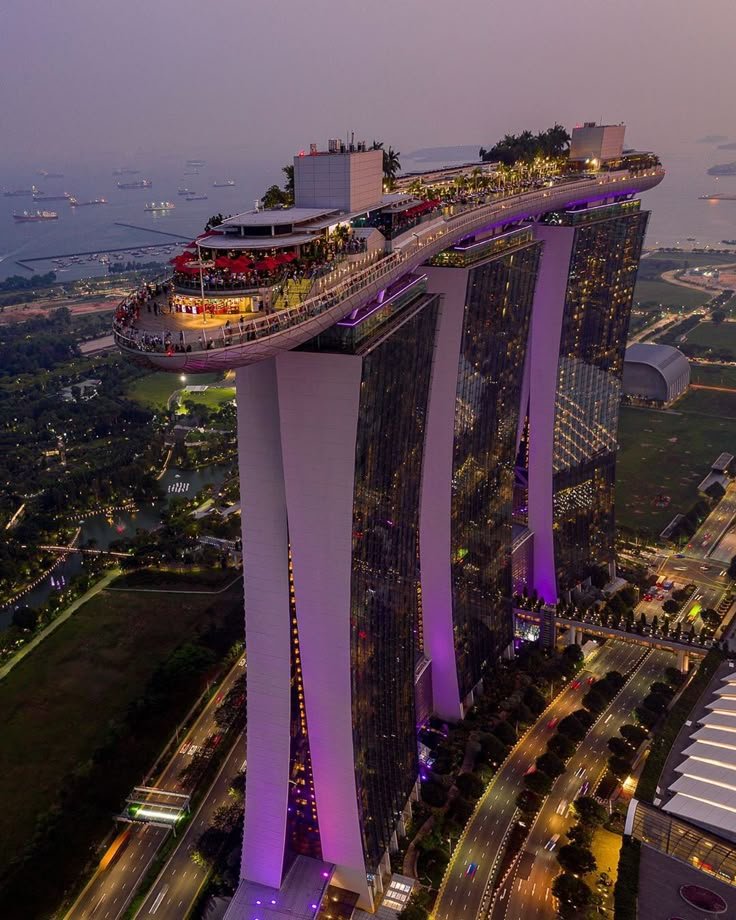
For Indian travelers, Singapore provides ideal first-step international travel—English-speaking, safe, efficient, and remarkably affordable despite the luxury reputation. The multicultural population includes substantial Indian communities, offering familiar comforts alongside unique experiences. Budget-conscious travelers can live comfortably on INR 3,000-5,000 daily; mid-range travelers enjoy significant comfort for INR 9,000-15,000.
Plan strategically around seasons and attractions, embrace both high-tech and cultural experiences, maximize hawker culture, and use efficient public transport to discover why Singapore consistently ranks among Asia’s top destinations.
Ready to discover Singapore’s wonders? Visit traveliholidays.com where our expert travel planners craft personalized Singapore packages combining iconic attractions, cultural experiences, culinary journeys, and family activities. Let us handle logistics while you experience the Lion City’s magic.
Recent Posts
Bali Bliss – Your Complete 2025 Guide to Indonesia’s Island Paradise
Singapore Sensation – 7 Days of Wonder in the Lion City
Dubai Decoded – The Ultimate Travel Guide to the City of Gold (2025 Edition)
All Categories
- Fitness Zone (1)
- Job & Feed (2)
- Restaurant (2)
- Tours & Travel (3)


